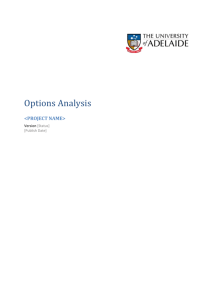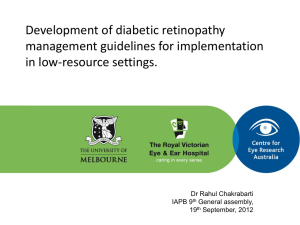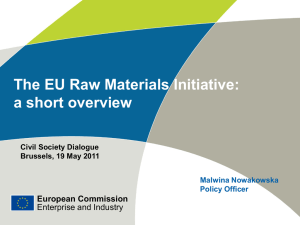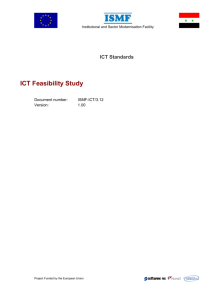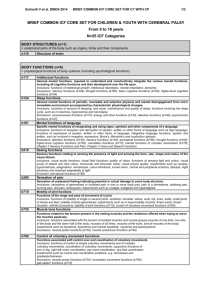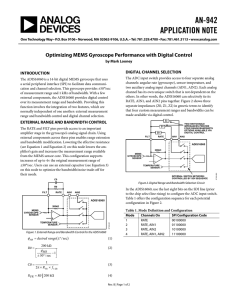Project Approach - University of Adelaide
advertisement
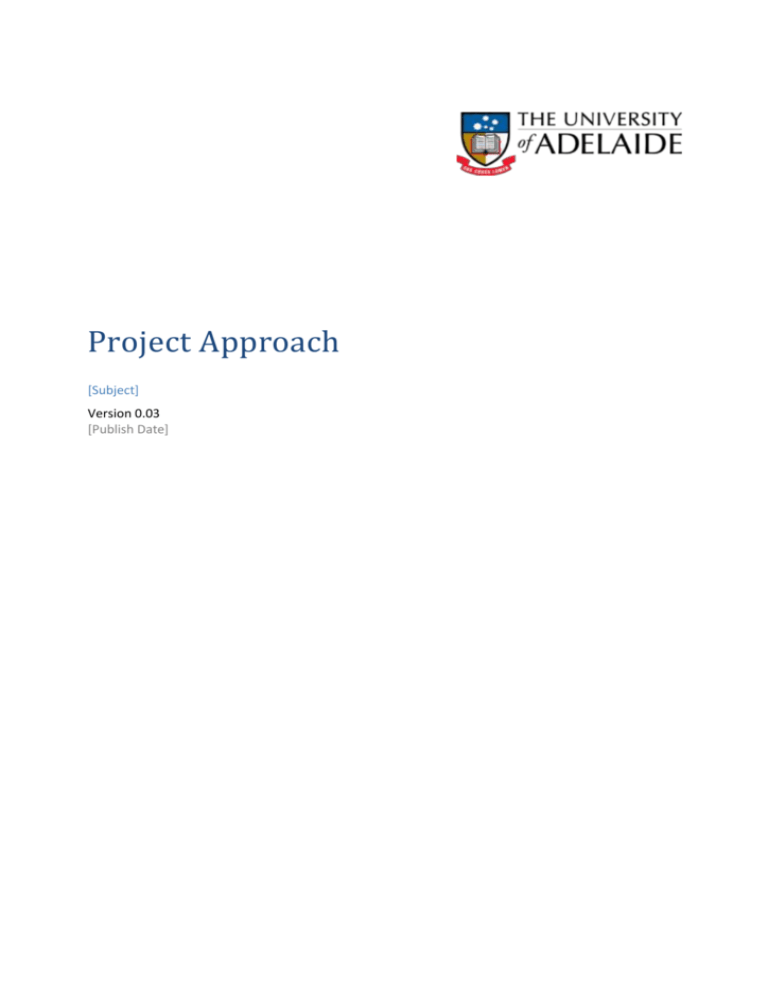
Project Approach [Subject] Version 0.03 [Publish Date] Project Approach REVISION HISTORY Date [Publish Date] Version Description of Change/Revision Author 0.03 APPROVAL Role / Committee Name / Members Date of Approval Version University ICT Architecture Committee DISTRIBUTION Name Version 0.03 Position Page 2 of 10 Project Approach TABLE OF CONTENTS 1 Document Overview .......................................................................................................................... 4 1.1 Context.................................................................................................................................. 4 1.2 Purpose ................................................................................................................................. 5 2 The Case for Change .......................................................................................................................... 6 2.1 Background ........................................................................................................................... 6 2.2 Current State......................................................................................................................... 6 2.3 Envisioned Future State ........................................................................................................ 6 3 Solution Outline ................................................................................................................................. 7 3.1 Scope..................................................................................................................................... 7 3.2 Options.................................................................................................................................. 7 3.3 Architecture .......................................................................................................................... 8 4 References ....................................................................................................................................... 10 Version 0.03 Page 3 of 10 Project Approach 1 DOCUMENT OVERVIEW 1.1 Context IT projects undertaken by the University of Adelaide are managed in accordance with the Project Management Framework. The primary goals of this framework are: To improve the performance of IT projects through use of a consistent approach, shared best practices, and continuous process improvement. To ensure that the University can exercise an appropriate level of control and oversight over IT projects from a strategic, financial, technical, and management perspective. For more information on the Project Management Framework, please refer to: https://www.adelaide.edu.au/infrastructure/solution_delivery/framework/lifecycle/. This Solution Approach has been produced in the Concept phase of the Project Management Framework as shown in the following figure. Figure 1: Concept phase highlighted in the Project Management Framework The primary objective of the Concept phase is to define the starting point for the project in terms of drivers, scope, approach, resources, and timeframes. It achieves this by: Identifying the project This initial step identifies the need for change and initiates all actions to follow. Whilst in some cases a New Project Proposal may be used, alternative forms such as e-mail, strategies, or roadmaps will also occur in practice. Identifying stakeholders and needs The drivers for the project are captured by identifying all relevant stakeholders and their needs in terms of ‘what’ and ‘by when’. At this point, the ‘how’ in terms of potential solutions should be avoided. A Needs Assessment is produced to ensure alignment and agreement between all stakeholders and the Concept phase team. Defining the approach to meet stakeholder needs The aim of this step is to define the solution concept that meets stakeholder needs whilst also taking into account the broader strategic context of the University. Approach alternatives each have an associated architecture which in turn can have an influence on scope. For example, a business driver to replace an unsupported IT system may yield a recommended approach that replaces one or more additional systems within the same project. This is also the step when initial Version 0.03 Page 4 of 10 Project Approach ‘re-use’ vs. ‘buy’ vs. ‘build’ alternatives can be considered in the context of existing ICT assets and enterprise architecture strategy. Some level of market investigation may occur for the purpose of confirming potential solution candidates. However, market engagement via competitive tender would typically be identified as an approach in this phase and conducted in the Feasibility phase. A Project Approach is produced to ensure alignment and agreement between all stakeholders, the Concept phase team, and governance bodies such as the University ICT Architecture Committee. Defining the project to deliver the solution The project commencing from Feasibility phase onwards is highly dependent upon the scope and approach endorsed at this point. For example, the Feasibility phase for a project using a competitive tender ‘buy’ approach would be quite different to that for a ‘re-use’ or ‘build’ project. A Project Brief is produced to seek and obtain all necessary endorsements and approvals associated with Gate 0 of the Project Management Framework. These elements are depicted in the following figure with this document highlighted. Concept Drivers Scope Project Recommendations Options Project Approach Needs Assessment Project Brief Architecture Gate 0 Registration and Process Advice Figure 2: Project Approach highlighted in the context of the Concept phase 1.2 Purpose The purpose of this document is to: Define the solution concept through consideration of scope, options, and architecture. Describe and provide justification for any recommendations made at this point. Enable effective enterprise architecture review and governance in terms of strategic fit and impact on the University. Provide sufficient information to enable the starting point and approach for the project to be defined in the Project Brief. Version 0.03 Page 5 of 10 Project Approach 2 THE CASE FOR CHANGE 2.1 Background 2.2 Current State 2.3 Envisioned Future State Version 0.03 Page 6 of 10 Project Approach 3 SOLUTION OUTLINE 3.1 Scope The solution scope inclusions and exclusions are listed respectively in the following tables. Table 1: Solution scope inclusions ID Solution Scope Inclusion SI-01 Table 2: Solution scope exclusions ID Solution Scope Exclusion SE-01 3.2 Options Several major considerations have been identified as key drivers for the project approach. These are listed in the following table along with the associated recommendations made. Table 3: Considerations and recommendations for the project approach ID Consideration Context Recommendation C-01 C-02 Further background and rationale for each of these recommendations is provided in the following tables. Table 4: [C-01] … Consideration [C-01] … Context Recommendation Basis Rationale Implications Version 0.03 Page 7 of 10 Project Approach 3.3 Architecture The proposed solution architecture is shown in the following figure. The options indicated are described in Error! Reference source not found. Error! Reference source not found. and will be determined in the Feasibility phase of the project. A more detailed view of the StudioAbroad application architecture is provided in Error! Reference source not found.. Figure 3: Overview of the solution architecture The following table lists the assumptions and constraints that have the effect of enabling, supporting, justifying, or limiting specific aspects of the solution. Table 5: Assumptions and constraints ID Assumption / Constraint AC-01 The following table lists the risks associated with either the architecture of the solution or the use of the solution in normal business operations. Note that these do not include risks associated with the project to deliver the solution. Risks are factors, scenarios, or events that have the potential for negative impact. Each risk has a likelihood of occurrence and a degree of impact in the event that it does occur. The risk rating is determined as a product of likelihood and impact in accordance with the matrix shown in Error! Reference source not found.. Version 0.03 Page 8 of 10 Project Approach Table 6: Risks ID Risk Likelihood Impact Rating R-01 Migration strategies for the risks above will be developed in the Feasibility phase of the project. Version 0.03 Page 9 of 10 Project Approach 4 REFERENCES The following references were cited in this document: There are no sources in the current document. Version 0.03 Page 10 of 10
